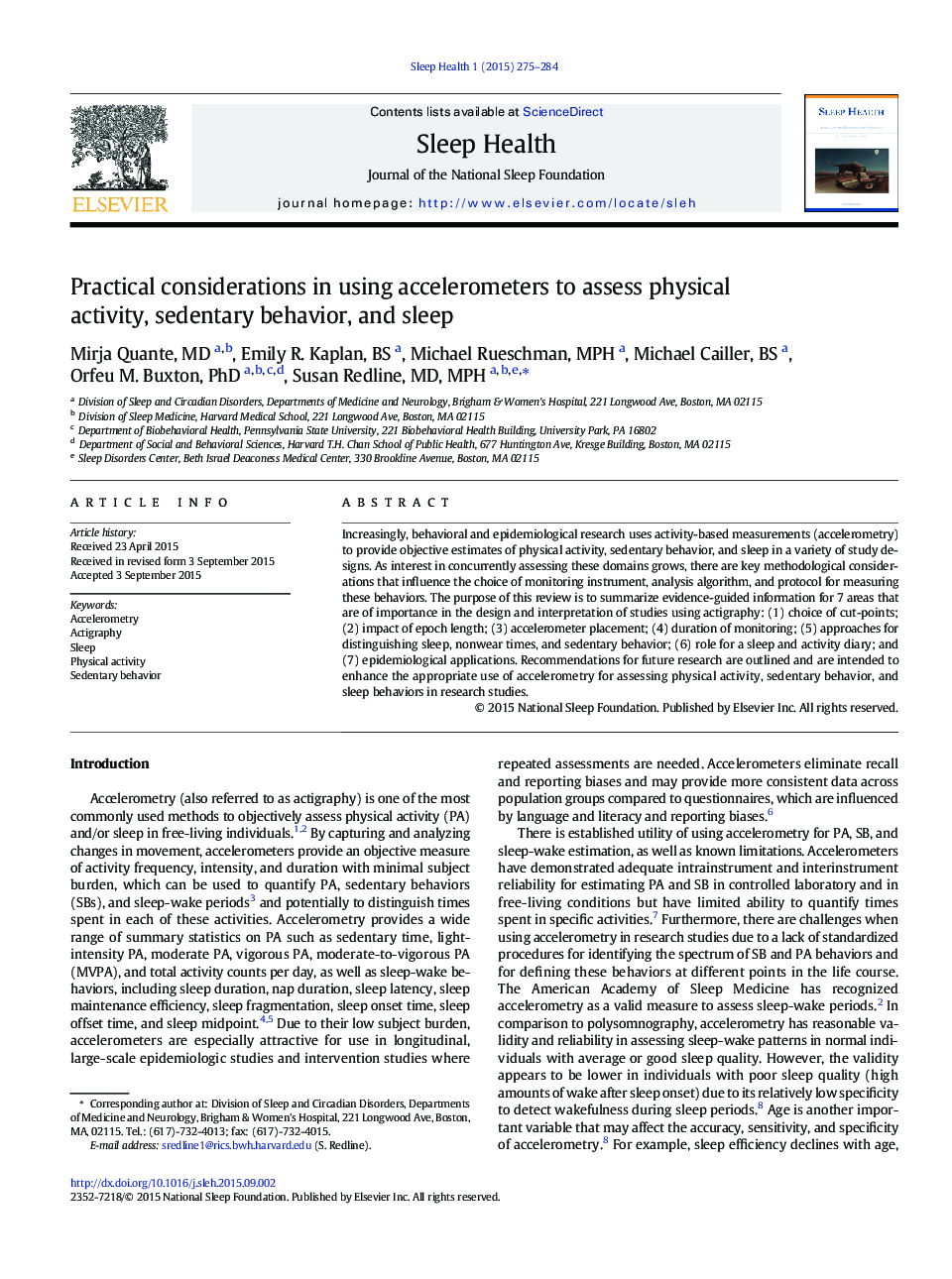| Article ID | Journal | Published Year | Pages | File Type |
|---|---|---|---|---|
| 916287 | Sleep Health | 2015 | 10 Pages |
Increasingly, behavioral and epidemiological research uses activity-based measurements (accelerometry) to provide objective estimates of physical activity, sedentary behavior, and sleep in a variety of study designs. As interest in concurrently assessing these domains grows, there are key methodological considerations that influence the choice of monitoring instrument, analysis algorithm, and protocol for measuring these behaviors. The purpose of this review is to summarize evidence-guided information for 7 areas that are of importance in the design and interpretation of studies using actigraphy: (1) choice of cut-points; (2) impact of epoch length; (3) accelerometer placement; (4) duration of monitoring; (5) approaches for distinguishing sleep, nonwear times, and sedentary behavior; (6) role for a sleep and activity diary; and (7) epidemiological applications. Recommendations for future research are outlined and are intended to enhance the appropriate use of accelerometry for assessing physical activity, sedentary behavior, and sleep behaviors in research studies.
